PIE CRUST 101: What Crust to Use, When
Stacey Ballis, writer/researcher for www.myrecipes.com, is a pie crust expert. She says that while older cooks and bakers that have grown up with recipes from mom and grandma (that simply say “one batch of dough for a double crust pie” or “quiche crust” with no indication of how to make one), are capable of turning out a great pie, this isn’t the case for most cooks today.
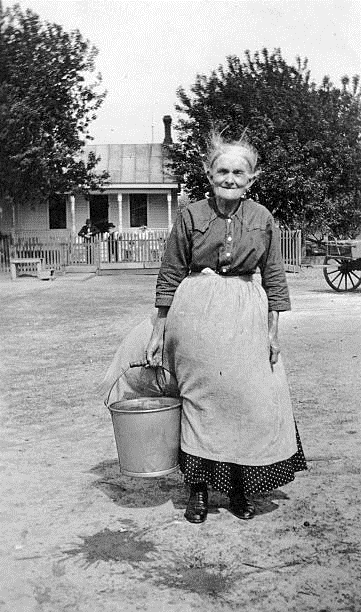
The days of everyone intuitively knowing how to make basic pastry as a matter of course are over. Thus, Stacey created a basic guideline for what the different crusts are and how to use them to their best advantage. Read on for a pie crust tutorial—what to use, and when.
But WAIT! “Different crusts?” I didn’t know there are different crusts? Did you? According to food historians, there are 8 different crusts that have been around for over a century. Stacey explains each one:
First, the most common: FLAKY CRUST. It’s the most basic, made of fat, flour, water and salt. Often it has either minimal sugar or no sugar at all. This crust, ideally handled very little, should provide a crispy flaky base for a variety of pies. It works well for fruit pies which are baked from raw, and with cream pies, which are usually blind baked.
Most recipes assume a double-crusted pie, but if using only a bottom crust (think cream pie), just freeze the second crust (as a disc or already rolled out), for up to three months.
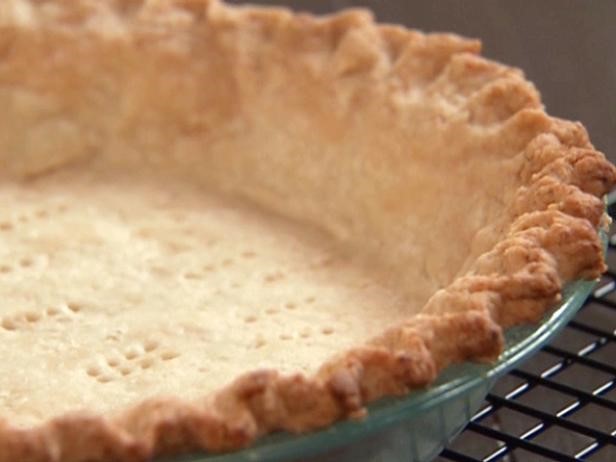
Next, TENDER CRUST. Similar to flaky crust, it incorporates some egg, and has no sugar, which results in a slightly less flaky crust, but is often easier to work with. This makes it ideal for pies that have decorative top crusts like lattices, since it’s more pliable and less likely to toughen with the added manipulation required with these sorts of toppings. Tender crust is also ideal for savory applications like pot pies and quiches, since without the sugar, they balance well.
And there’s HOT WATER CRUST. This crust is specifically meant for savory pies that require a hearty robust crust that can contain fillings without leaking. British in origin, this is the crust you see with classics like pork pie. It’s made by melting the fat, often lard or shortening, into hot water and then stirring in the flour. It’s great for things like meat-filled hand pies, or savory pies that have a sauce or gravy in them, since leaking is not a concern.
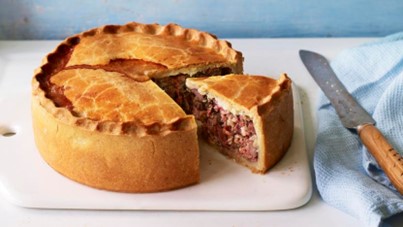
SWEET CRUST (paté sucrée) is also a staple. It’s used for tarts and tartlets. It incorporates both sugar and egg, and is rolled very thin to line pans. This crust is fully blind-baked ‘til crisp and browned and is filled with cream and/or fruit fillings. Almost like a crisp cookie, it’s a forgiving dough (easier to work with than some of the flakier pastry versions).
Don’t forget CROSTATA CRUST. Another sweet crust, it’s more shortbread-like and tender than sweet crust. It often incorporates citrus zest or spice as a flavoring. It’s designed for thin jam- or curd-filled tarts that are closer to a bar cookie than a true tart or pie. Unlike the thin sugar crust, crostata crust is pressed into the pan a bit thicker, and then either crumbled on top of the filling or latticed, and baked raw instead of blind-or pre-baked. It’s not finicky and comes together quickly in a food processor.
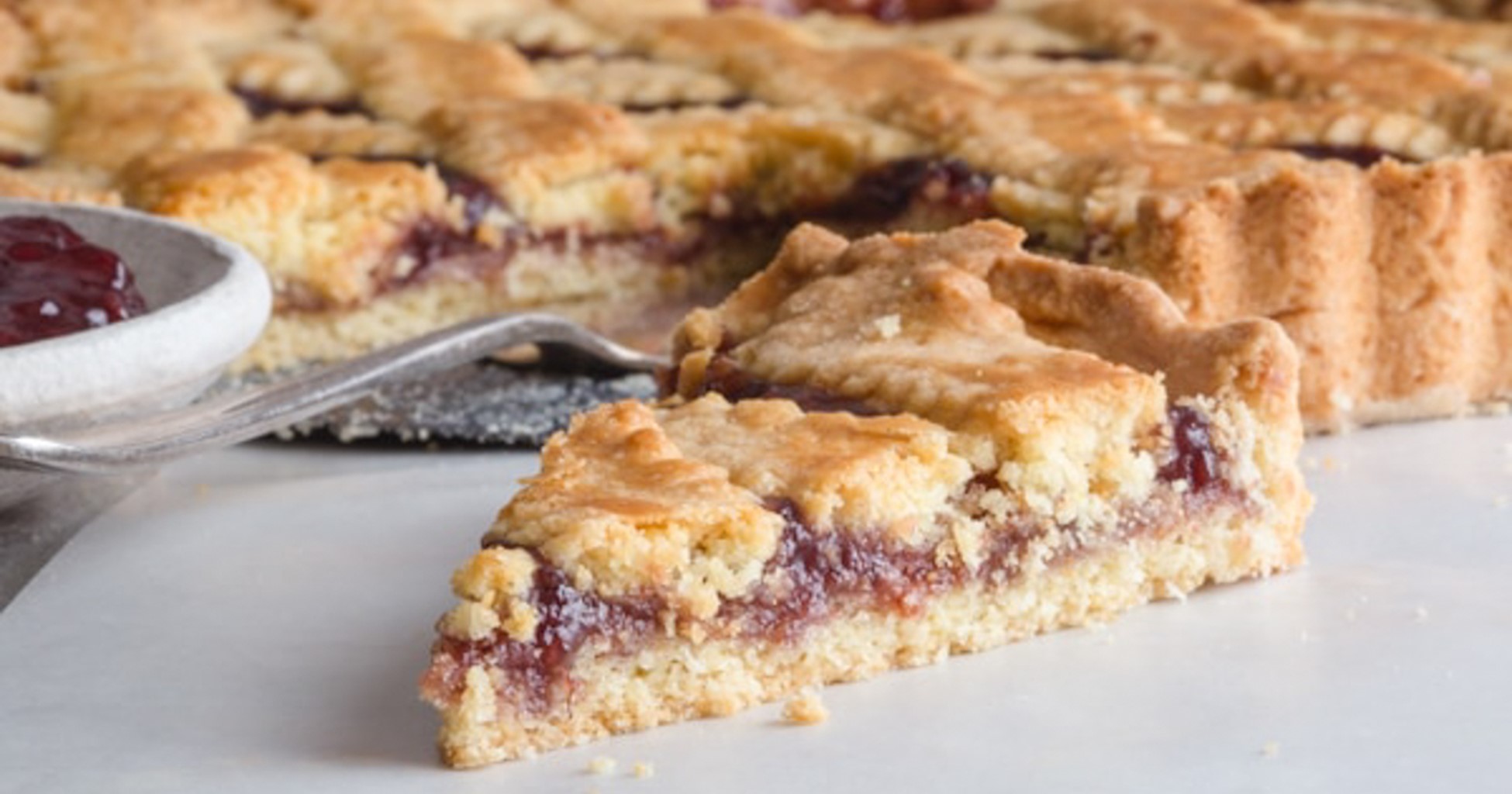
CREAM CHEESE CRUST is a MUST to know. Professional bakers love it, saying it’s “a dream to work with” because it’s not finicky and nor fussy. It’s essentially your basic flaky pie crust recipe but with half the butter swapped out for cream cheese. This swap helps the crust stay tender and flexible. It also calls for vinegar, which helps it stay tender if overworked.
Great for basic pies, you bake from raw, so it works very well with drier fillings like nut pies or chess pies and the like. And since it has no sugar, you can go sweet or savory with your fillings. Be sure to give this one a try! To get you started, here’s a great recipe from www.natashaskitchen.com:
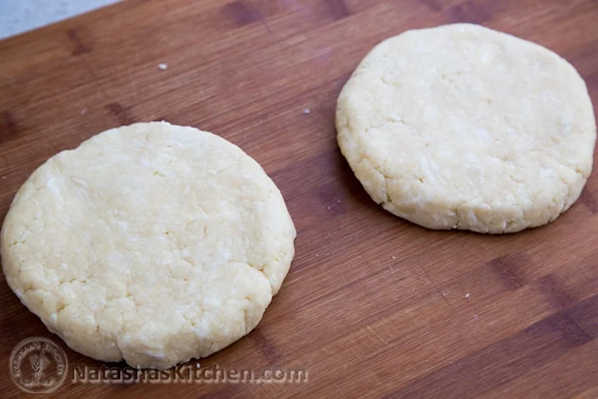
2 cups plus 4 tablespoons all-purpose flour
2 tablespoons sugar
1/2 teaspoon salt
12 tablespoons COLD unsalted butter cut into 1/4" cubes
6 ounces COLD cream cheese cut into 1/4" cubes
3 to 5 tablespoons COLD heavy whipping cream
Directions:
Add Recipe to Cook'n
CORNMEAL CRUST is another basic. Usually a butter-based crust, it’s a hearty base for savory tarts and pies. Its blend of fine cornmeal and all-purpose flour creates a nutty and flavorful base that pairs well with robust flavors. In fact, some deep-dish pizzas are made on a cornmeal butter crust for this reason. Any tart that contains cheeses, cured meats, or intensely flavored seasoning is a perfect match for this crust.

Finally, PUFF PASTRY. These two are tricky, finicky things to make and work with. It’s made by encasing a flat sheet of butter in dough and then going through a series of folds and turns to create a many-layered dough. The lamination causes it to puff up into many flaky layers. Professional bakers recommend just buying it (found in a store’s freezer section) because of how time-consuming and difficult it is.

The days of everyone intuitively knowing how to make basic pastry as a matter of course are over. Thus, Stacey created a basic guideline for what the different crusts are and how to use them to their best advantage. Read on for a pie crust tutorial—what to use, and when.
But WAIT! “Different crusts?” I didn’t know there are different crusts? Did you? According to food historians, there are 8 different crusts that have been around for over a century. Stacey explains each one:
First, the most common: FLAKY CRUST. It’s the most basic, made of fat, flour, water and salt. Often it has either minimal sugar or no sugar at all. This crust, ideally handled very little, should provide a crispy flaky base for a variety of pies. It works well for fruit pies which are baked from raw, and with cream pies, which are usually blind baked.
Most recipes assume a double-crusted pie, but if using only a bottom crust (think cream pie), just freeze the second crust (as a disc or already rolled out), for up to three months.

Next, TENDER CRUST. Similar to flaky crust, it incorporates some egg, and has no sugar, which results in a slightly less flaky crust, but is often easier to work with. This makes it ideal for pies that have decorative top crusts like lattices, since it’s more pliable and less likely to toughen with the added manipulation required with these sorts of toppings. Tender crust is also ideal for savory applications like pot pies and quiches, since without the sugar, they balance well.
And there’s HOT WATER CRUST. This crust is specifically meant for savory pies that require a hearty robust crust that can contain fillings without leaking. British in origin, this is the crust you see with classics like pork pie. It’s made by melting the fat, often lard or shortening, into hot water and then stirring in the flour. It’s great for things like meat-filled hand pies, or savory pies that have a sauce or gravy in them, since leaking is not a concern.

SWEET CRUST (paté sucrée) is also a staple. It’s used for tarts and tartlets. It incorporates both sugar and egg, and is rolled very thin to line pans. This crust is fully blind-baked ‘til crisp and browned and is filled with cream and/or fruit fillings. Almost like a crisp cookie, it’s a forgiving dough (easier to work with than some of the flakier pastry versions).
Don’t forget CROSTATA CRUST. Another sweet crust, it’s more shortbread-like and tender than sweet crust. It often incorporates citrus zest or spice as a flavoring. It’s designed for thin jam- or curd-filled tarts that are closer to a bar cookie than a true tart or pie. Unlike the thin sugar crust, crostata crust is pressed into the pan a bit thicker, and then either crumbled on top of the filling or latticed, and baked raw instead of blind-or pre-baked. It’s not finicky and comes together quickly in a food processor.

CREAM CHEESE CRUST is a MUST to know. Professional bakers love it, saying it’s “a dream to work with” because it’s not finicky and nor fussy. It’s essentially your basic flaky pie crust recipe but with half the butter swapped out for cream cheese. This swap helps the crust stay tender and flexible. It also calls for vinegar, which helps it stay tender if overworked.
Great for basic pies, you bake from raw, so it works very well with drier fillings like nut pies or chess pies and the like. And since it has no sugar, you can go sweet or savory with your fillings. Be sure to give this one a try! To get you started, here’s a great recipe from www.natashaskitchen.com:

Easy Cream Cheese Pie Crust
Ingredients:
2 cups plus 4 tablespoons all-purpose flour
2 tablespoons sugar
1/2 teaspoon salt
12 tablespoons COLD unsalted butter cut into 1/4" cubes
6 ounces COLD cream cheese cut into 1/4" cubes
3 to 5 tablespoons COLD heavy whipping cream
Directions:
Cut the COLD butter and COLD cream cheese into 1/4-inch pieces. Using a Pastry Blender or a food processor with blade attachment, cut the butter and cream cheese into the flour mixture until it resembles coarse crumbs with pea-sized pieces. Note: you could use a knife, but that would take forever.
Drizzle 3 tbsp cold heavy cream over the dough and cut into the dough with a spatula, adding more cream as needed until the dough forms moist clumps.
Divide the dough into 2 pieces, press into flat disks, cover each piece tightly in plastic wrap and refrigerate at least 1 hour. It stores well in the fridge up to 2 days.
Drizzle 3 tbsp cold heavy cream over the dough and cut into the dough with a spatula, adding more cream as needed until the dough forms moist clumps.
Divide the dough into 2 pieces, press into flat disks, cover each piece tightly in plastic wrap and refrigerate at least 1 hour. It stores well in the fridge up to 2 days.
Recipe formatted with the Cook'n Recipe Software from DVO Enterprises.
CORNMEAL CRUST is another basic. Usually a butter-based crust, it’s a hearty base for savory tarts and pies. Its blend of fine cornmeal and all-purpose flour creates a nutty and flavorful base that pairs well with robust flavors. In fact, some deep-dish pizzas are made on a cornmeal butter crust for this reason. Any tart that contains cheeses, cured meats, or intensely flavored seasoning is a perfect match for this crust.

Finally, PUFF PASTRY. These two are tricky, finicky things to make and work with. It’s made by encasing a flat sheet of butter in dough and then going through a series of folds and turns to create a many-layered dough. The lamination causes it to puff up into many flaky layers. Professional bakers recommend just buying it (found in a store’s freezer section) because of how time-consuming and difficult it is.
 Alice Osborne
Alice Osborne
DVO Newsletter Contributor since 2006
Email the author! alice@dvo.com
Sources:
- www.istock.com
- www.foodnetwork.com
- www.bbc.co.uk
- www.anitalianinmykitchen.com
- www.natashaskitchen.com
- www.comfortablydomestic.com
